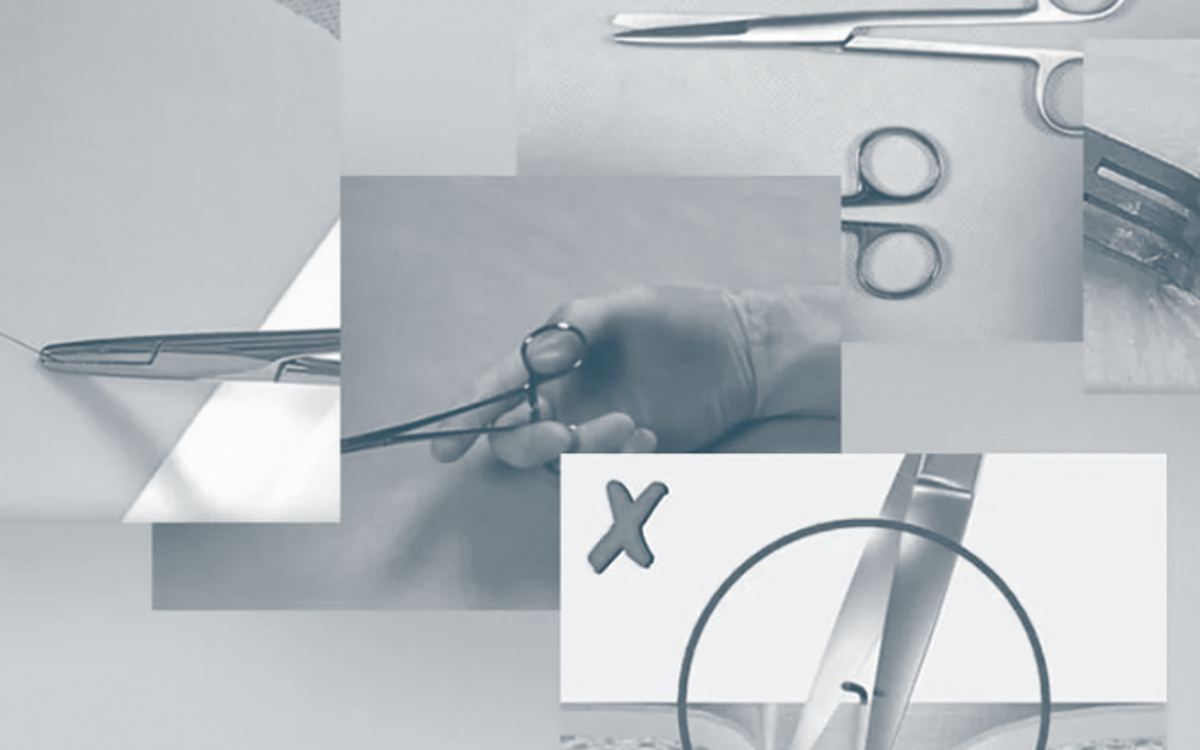Suture Tutor | The Online Suturing Course
11 modules of essential knowledge and skills for laparoscopic surgery.

What is Suture Tutor?
Suture Tutor is an online course with over 250 videos covering suturing essentials, from prep and instrument handling, to suturing techniques and after care.
Broken down into 11 sequential modules, you can follow the course in order, or jump to relevant sections to learn or refresh your skills.
Try before you buy
Take a look at some of our most popular videos, below, that are included in the full course.
Already purchased Suture Tutor?
Knot Tying
Sample content from Knot Tying: Surgeon's Knot - Principles
With an instrument tie, the thread is looped twice around the needle holder for the first throw only. This adds friction which will give extra grip and prevent the knot from coming undone.
With a hand tied knot, the extra friction is achieved by making an additional twist in the first throw only.
Suturing Techniques - Demo 1
Sample content from Suturing Techniques: General Principles - Inserting the suture
Always insert and remove a curved needle along the path of its curvature to ensure minimal trauma.
Consider the needle's path as a circle that begins before the needle touches the skin and continues after leaving it.
The needle should follow this curved path as it enters and passes through tissue. Continue the circular path as you remove the needle.
Ensure that the needle takes an adequate bite on each side of the wound, passing through all layers of the skin and bringing the edges together without tension.
It is usually best to pass the needle through each edge of the wound separately, repositioning the needle in the needle holder before taking the second bite.
An experienced surgeon using an adequate needle in a small wound can take both sides in a single bite.
Suturing Techniques - Demo 2
Sample from Suturing Techniques: Interrupted Sutures - Practise
Using an atraumatic curved needle, grasp the needle on its flat section, about two thirds of the way from the point, with the tip of your needle holder's jaws. Angle the needle slightly forward in the instrument's jaws and take a bite on the first side of the wound ensuring that the needle follows the line of its curvature.
Remove the needle and reposition in the needle holder before taking a corresponding bite on the other side of the wound.
Pull the suture through so that only a short free end remains. If your suture material is very springy, we recommend that for this initial throw only you loop it twice around the needle holder as shown here. This will help the throw lie flat and form a more secure surgeon's knot. Now grasp the free end of the suture with the needle holder's jaws and pull it towards you to tighten the first throw. Make sure that it lies flat while being tightened.
Make a second throw by looping the suture once around the needle holder in the opposite direction to the first throw. Now grasp the free end of the suture with the needle holder's jaws and tighten, this time pulling it away from you.
Then make three further throws, changing both the direction of throw and pull at each stage.
Cut the suture ends with scissors, leaving the ends about 0.5 cm long.
Scrubbing, Gowning & Gloving
Sample from Scrubbing, Gowning & Gloving - Putting On Your Gloves
The technique described here is called the Closed Gloving Technique. The scrubbed-in person's hands remain inside the sleeves until the gloves are over them.
Move to the trolley or surface where you have placed your glove pack. With your hands still inside the sleeves of your gown, open the glove pack and turn it so that the fingers of the gloves are facing you.
The left half of the glove packet contains the glove for your right hand. Using your right hand, pick up the cuff of the glove through your gown and rest it on your right hand inside your gown, so that your palm is facing upward and the finger section of the glove is facing towards you. With your left hand, grasp the other side of the glove cuff through your gown and slide your right hand through the cuff into the glove.
Now use the same technique to glove your left hand. With your left hand, grasp the edge of the glove cuff through your gown, and use your gloved right hand to grasp the other edge of the cuff. Bring the cuff of the left hand glove over the cuff of the gown sleeve and slide your left hand into the glove.
Once you have applied your gloves, your hands should remain in front of you and above your waist at all times.
To complete gowning and gloving, grasp the paper tag at the side of your gown and detach the short tie. Hold the short tie in your left hand and pass the Theatre Nurse the paper tag attached to the long tie. Rotate 360 degrees and pull the long tie away from the paper tag held by the Theatre Nurse. Tie the two ends together.
Handling of Instruments
Sample from Handling of Instruments: Dissecting Forceps - Principles
Dissecting forceps are like tweezers, with two springy metal legs joined at one end. Their free tips must meet accurately. These forceps are used to grasp tissue with delicacy and precision.
The forceps are usually held like a pen, in the non-dominant hand. They are used to manipulate tissues for the instrument in the dominant hand to dissect, cut or suture.
Toothed forceps require less pressure to adequately grip tough tissues such as skin, but the teeth may cause trauma to delicate tissue.
In general non-toothed forceps should be used whenever possible. The exceptions are when handling skin and bone.
